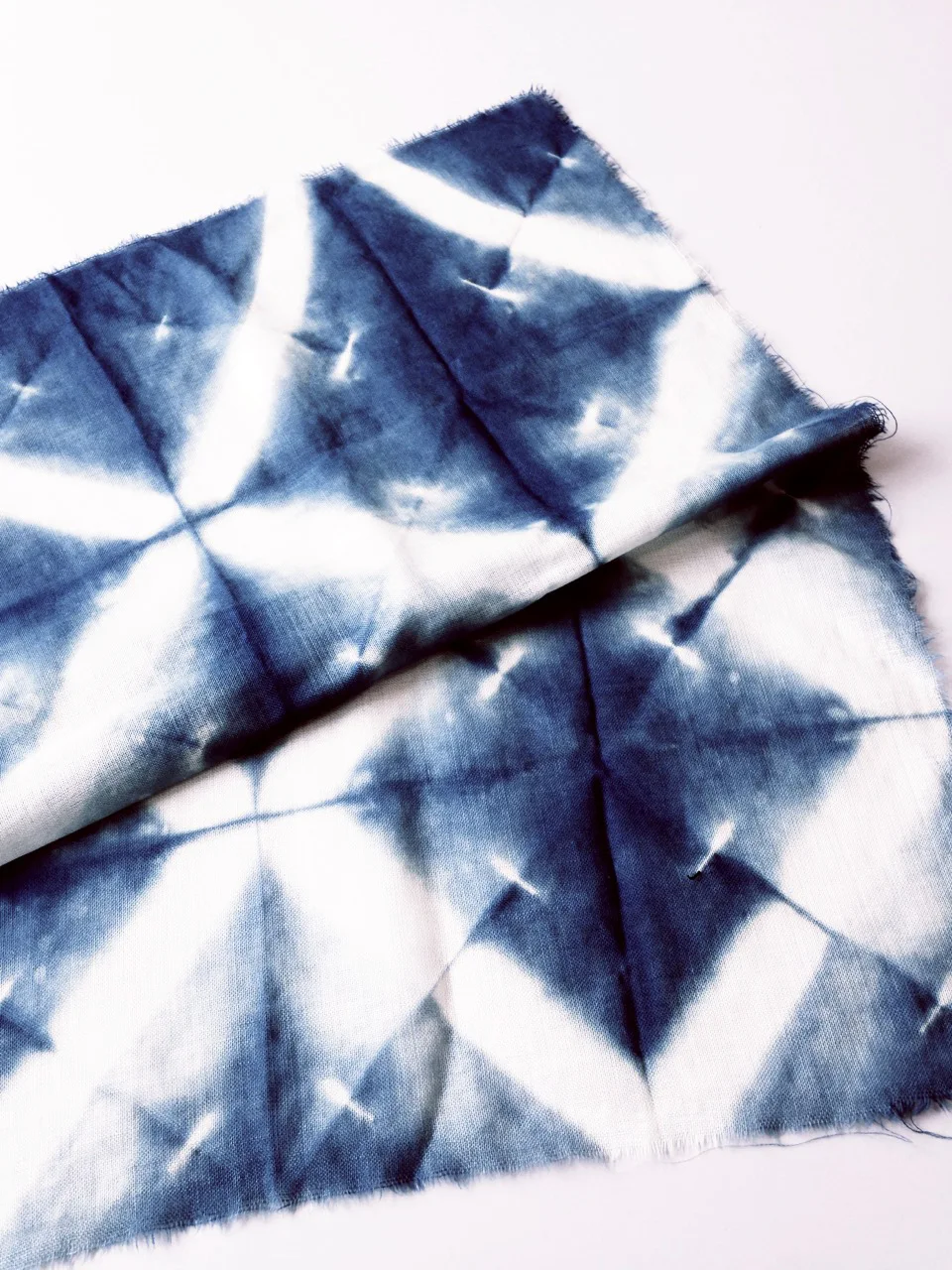Last weekend I enrolled in a Japanese dye and pattern techniques master class at Textielfabrique, Rotterdam. During this one-day workshop we learned the process of dying with natural indigo, different Shibori dying techniques, dying & weaving with Kasuri yarn and creating patterns by applying Sashiko stitching.
Techniques like Shibori and Sashiko stem from the Japanese Edo period. During this period (1603-1868) Japanese society was under the rule of the Tokugawa shogunate. It was a sustainable and self-sufficient society, which was based on the principles of complete utilization of finite resources. Only China, Korea, the Ryuku islands and The Netherlands were allowed to trade with Japan. This led to scarcity of all kinds of resources, including fabric. This scarcity also led to decorative restrictions. Lower classes were only allowed to use blue (indigo) dye instead of red and gold and decorations had to be limited to the size of a grain of rice.
Sashiko
People had to come up with ways to both strengthen and repair their clothing. Sashiko (literally "little stabs") is a form of decorative reinforcement stitching or functional embroidery. The white cotton stitches the size of rice grains on the traditional indigo blue cloth gives Sashiko its distinctive appearance.
 |
Sashiko stitching on indigo cloth (close-up) |
The hemp leaf pattern (Asa no Ha) was known for its rapid growth and strength. The pattern was often used for clothes of new-born children. The wives of merchants would also often wear it. It was believed to bring good fortune to the wearer.
 |
| Sashiko stitching on indigo cloth, hemp leaf (Asa no Ha) pattern |
 |
| Sashiko stitching and patchwork on indigo cloth |
Shibori
Shibori is a generic term for myriad Japanese pattern and dyeing methods using clamping, folding, stitching and binding. These methods prevent parts of the fabric from colouring blue, which creates patterns that are hard to replicate.
 |
| Indigo blue shibori sticks used for binding and clamping |
We used 3 different kinds of fabric to make our Shibori studies: cotton, wool and silk. By experimenting with different folding & clamping (Itajime) and stitching (Nui) methods several patterns were made. Tight tied fabric results in strong and clean lines and loose tied fabric in fluid lines.
 |
| Soaking the shibori works in water before dyeing |
After soaking the tied fabric in water for a couple of hours, the fabrics can be transferred into the indigo dye bath. We learned to make a dye bath as well, by using natural indigo, fructose, calcium hydroxide and of course water. The dye bath is completely biodegradable and reusable. It can also be stored and preserved for years. (I was paying close attention to this simple yet laborious process, so no pictures here, sorry)
 |
| My 3 pieces of shibori fabric |
 |
| Itajime shibori on cotton |
 |
| Itajime shibori on silk |
 |
Itajime & Nui shibori on wool |
It was fun to experiment with different kinds of fabric. Cotton results in the most saturated colour indigo blue. On silk the indigo colour will be slightly greener and because of the fluidity of the silk fabric it's harder to control in the folding process. When using too much calcium hydroxide in the dye bath, wool will become stiff and will be unable to process.
 |
| Hand-dyed kasuri yarn |
Kasuri
Kasuri (ikat technique) is fabric that has been woven with fibres dyed specifically to create patterns and images in the fabric. The nature of ikat is that the design looks blurred, hence the name kasuri, which derives from the verb kasuru (to graze; to write something in a blurry or scratchy manner). Kasuri can be ikat of both the weft and the warp. The threads can be a solid colour or resist-dyed, and the weft thread is resist-dyed in a specific pattern dyed with indigo to form a pattern when the cloth is woven. We made our own kasuri yarn by tying the cotton yarn with tape, then soaking it in water and transferring it to the indigo dye bath. When rinsing the yarn the indigo blue colour will appear and set and then it's ready for kasuri weaving.
The results of my kasuri-weaving project can be viewed here. If you'd like me to specify certain parts, leave your question or comment below.


No comments
Post a Comment